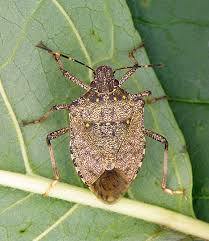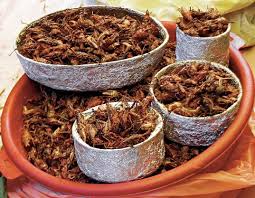|
Getting your Trinity Audio player ready...
|
By Clifford Akumu.
A new study now shows that edible stink bug(which is widely found and eaten in parts of southern Africa)has a high nutritional importance in diets of most Kenyans.
This shows that, feeding on the edible stink bug has the potential to help lessen nutrient-deficient communities in Kenya where vegetable and animal sources may be limited.
In a paper published in the current PLoS ONE journal, icipe researchers report that the stink bug is a rich source of nutrients and antioxidants, and has the potential to play a vital role in improving food and nutritional security, as well as the incomes of rural African communities.

“We found high protein and fatty acid contents in the edible stink bug, including seven that are considered essential for human nutrition and health. The insect also contains some flavonoids, a nutrient group most famous for its antioxidant and anti-inflammatory health benefits”explains icipe scientist, Prof. Baldwyn Torto.
He adds: “The edible stink bug provides 12 amino acids, two of which are often lacking in the predominantly cereal-based diets consumed in many parts of Africa. The insect also contains high crude protein and fats, and although it is not a great source of minerals, it contains phosphorus in relatively high levels.”
Professor Torto says that carbohydrate based diets such as cereal and cassava (e.g. Unga) can be fortified with powdered processed edible stink bug to increase the nutritional content and create employment.
“With scientific basis for insects use as food and ability to develop simple, affordable and environmentally-friendly methods for their mass production we will embark on ensuring food security and income generation for the rural community” says Torto.
However, the icipe study has also revealed the need for improved care in the harvesting and storage of the edible stink bugs, to safeguard their nutritional value and prevent contamination by harmful compounds.
“Just like other food sources such as cereals and vegetables, harvesting and processing of the insect requires use of appropriate storage procedures to avoid the contamination with mould such as aflatoxins which are toxic to human health”
Growth and development of the fungus producing the aflatoxins is favoured by warm temperatures and high humidity.
“Indeed, we found traces of aflatoxin, one of the major groups of mycotoxins, in traditionally collected and stored samples of the edible stink bug. In contrast, we did not detect the compounds in samples of edible stink bugs stored in clean and non-contaminated bags, for instance zip-lock bags,” notes Dr Robert Musundire, a postdoctoral fellow at icipe, and lead author of the study.
The researchers therefore recommend better handling and storage of the edible stink bug to ensure its safety as food.
“To avoid aflatoxin contamination, use of plastic-lined grain baskets and gunny bags, which are easy to use and clean, is recommended for storage of traditionally processed/cooked edible stink bugs” adds Torto.
They conclude that when harvested and stored appropriately the edible stink bug has the potential to be an important source of nutrients and antioxidants in the diets of African rural communities, which are often dominated by cereals that may lack some essential amino acids and nutrients.
Currently, most insects consumed as food are harvested on seasonal basis, but there underlies the need to promote their consumption.
“Our goal is for the common man and woman in the rural community to be able to have their favourite insect diet available to them all year round as a food source or a means to generate an income”
“Some of the traditional foods including insects consumed by the common man or woman in the rural community in Kenya and elsewhere in Africa are highly nutritious and beneficial to human health and should be promoted into the main stream diets” Torto concludes.
This research “Aflatoxin Contamination Detected in Nutrient and Anti-Oxidant Rich Edible Stink Bug Stored in Recycled Grain Containers” was funded by the German Academic Exchange Service (DAAD), under the Postdoctoral Fellowships in sub-Saharan Africa at DAAD supported Centres of Excellence.














